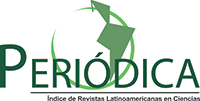Evaluation of concrete self-healing with different insertion techniques of chemical and bacterial solutions
DOI:
https://doi.org/10.21041/ra.v12i1.559Keywords:
bioconcrete, self-healing, self-reparing, crack, bacteriaAbstract
This study evaluated the self-healing potential of concrete with chemical and bacterial solutions encapsulated in different materials. The encapsulating materials were expanded clay (EC) and expanded perlite (EP). Self-healing effectiveness was evaluated visually with a high-precision optical microscope and 3D microtomography. Results pointed to improved performance of bacterial solutions encapsulated in expanded clay (BAC.EC) which were able to heal fissures of 0.57 mm. In contrast, bacterial solutions encapsulated in expanded perlite (BAC.EP) and sodium silicate replacing water during molding (SS) healed fissures of 0.16 mm and 0.29 mm, respectively.
Downloads
References
Associação Brasileira de Normas Técnicas (2005), NBR 13279: Argamassa para assentamento e revestimento de paredes e tetos - Determinação da resistência à tração na flexão e à compressão. Rio de Janeiro.
Associação Brasileira de Normas Técnicas (2015), NBR 5738: Concreto - Procedimento para moldagem e cura de corpos de prova. Rio de Janeiro.
Associação Brasileira de Normas Técnicas (2018), NBR 5739: Concreto - Ensaio de compressão de corpos de prova cilíndricos. Rio de Janeiro.
Associação Brasileira de Normas Técnicas (2014), NBR 6118: Projeto de estruturas de concreto – Procedimento. Rio de Janeiro.
Associação Brasileira de Normas Técnicas (2003), NBR NM 248: Agregados - Determinação da composição granulométrica. Rio de Janeiro.
Associação Brasileira de Normas Técnicas (2006), NBR NM 45: Agregados - Determinação da massa unitária e do volume de vazios. Rio de Janeiro.
Associação Brasileira de Normas Técnicas (2005), NBR NM 52: Agregado miúdo - Determinação de massa específica e massa específica aparente. Rio de Janeiro.
Achal, V., Mukherjee, A., Reddy, M. S. (2011), Effect of calcifying bacteria on permeation properties of concrete structures. Journal of Industrial Microbiology and Biotechnology. 38:1229-1234, http://dx.doi.org/10.1007/s10295-010-0901-8
Al-Tabbaa, A., Litina, C., Giannaros, P., Kanellopoulos, A., Souza, L. (2019), First UK field application and performance of microcapsule-based self-healing concrete. Construction and Building Materials. 208:669-685, https://doi.org/10.1016/j.conbuildmat.2019.02.178
Alghamri, R., Kanellopoulos, A., Al-Tabbaa, A (2016), Impregnation and encapsulation of lightweight aggregates for self-healing concrete. Construction and Building Materials. 124:910-921, https://doi.org/10.1016/j.conbuildmat.2016.07.143
Carmona Filho, A., Carmona, T. (2013), “Fissuração nas estruturas de concreto”. Boletim Técnico ALCONPAT Internacional.
Cappellesso, V. G. (2018), “Avaliação da autocicatrização de fissuras em concretos com diferentes cimentos”, Dissertação de Mestrado em Engenharia, Universidade Federal do Rio Grande do Sul, Porto Alegre.
Chemrouk, M. (2015), The deteriorations of reinforced concrete and the option of high performances reinforced concrete. Procedia Engineering. 125:713-724, https://doi.org/10.1016/j.proeng.2015.11.112
Gupta, S., Pang, S. D., Kua, H. W (2017), Autonomous healing in concrete by bio-based healing agents – A review. Construction and Building Materials. 146:419-428, https://doi.org/10.1016/j.conbuildmat.2017.04.111
JIANG, L. et al. Sugar-coated expanded perlite as a bacterial carrier for crack-healing concrete applications. Construction and Building Materials, v. 232, p. 117222, 2020, https://doi.org/10.1016/j.conbuildmat.2019.117222
Jonkers, H. M. (2011), Bacteria-based self-healing concrete. Frankfurter Afrikanistische Blätter. 8:49-79.
Jonkers, H. M., Thijssen, A. (2010). “Bacteria Mediated Remediation of Concrete Strutures” in: K. van Breugel, G. Ye, Y. Yuan (Eds.), 2nd International Symposium on Service Life Design for Infrastructure, [S. l.], pp. 833-840.
Krishnapriya, S., Babu, D. L. V., Arulraj, G. P. (2015), Isolation and identification of 60 bacteria to improve the strength of concrete. Microbiological Research. 174:48-55, https://doi.org/10.1016/j.micres.2015.03.009
Li, V. C., Herbert, E. (2012), Robust Self-Healing Concrete for Sustainable Infrastructure. Journal of Advanced Concrete Technology. 10:207-218, https://doi.org/10.3151/jact.10.207
LIU, C et al. (2021), Experimental and analytical study on the flexural rigidity of microbial self-healing concrete based on recycled coarse aggregate (RCA). Construction and Building Materials, Vol 85, https://doi.org/10.1016/j.conbuildmat.2021.122941
Lottermann, A. F. (2013), “Patologias em estruturas de concreto: estudo de caso”, Monografia, Universidade Regional do Noroeste do Estado do Rio Grande do Sul, p. 66.
Maddalena, R., Taha, H., Gardner, D. (2021), Self-healing potential of supplementary cementitious materials in cement mortars: sorptivity and pore structure. Developments in the built environment, Vol 6, https://doi.org/10.1016/j.dibe.2021.100044
Mehta, P. K., Monteiro, P. J. (2014), “Concreto: microestrutura, propriedades e materiais”. IBRACON, São Paulo, Brasil, p. 782.
Milla, J. et al. (2019), Measuring the crack-repair efficiency of steel fiber reinforced concrete beams with microencapsulated calcium nitrate. Construction and Building Materials, v. 201, p. 526–538, https://doi.org/10.1016/j.conbuildmat.2018.12.193
Pacheco, F. (2020), “Análise da confiabilidade dos mecanismos de autorregeneração do concreto em ambientes agressivos de exposição”, Tese de Doutorado em Engenharia Civil, Universidade do Vale do Rio dos Sinos, p. 348.
Patel, P. (2015), Helping Concrete Heal Itself. ACS Central Science. 1(9):470-472.
Pelletier, M. M., Brown, R., Sshukla, A., Bose, A. (2011), Selfhealing concrete with a microencapsulated healing agent. University of Rhode Island, Kingston, RI, USA.
Rais, M. S., Khan, R. A. (2021), Experimental investigation on the strength and durability properties of bacterial self-healing recycled aggregate concrete with mineral admixtures. Construction and Building Materials. Vol 306, Nov 2021, https://doi.org/10.1016/j.conbuildmat.2021.124901
Ramachandran, S. K., Ramakrishnan, V., Bang, S. S. (2001), Remediation of concrete using microorganisms, ACI Mater. J. 98(1).
Schwantes-Cezario, N., Nogueira, G. S. F., Toralles, B. M. (2017), Biocimentação de compósitos cimentícios mediante adição de esporos de B. subtilis AP91. Revista de Engenharia Civil IMED. 4(2):142-158, https://doi.org/10.18256/2358-6508.2017.v4i2.2072
Seifan, M., Samani, A. K. and Berenjian, A. (2016), Bioconcrete: next generation of selfhealing concrete, Applied Microbiology and Biotechnology. 100:2591-2602, https://doi.org/10.1007/s00253-016-7316-z
Sisomphon, K., Copuroglu, O., Fraaij, A. (2011), Application of encapsulated lightweight aggregate impregnated with sodium monofluorophosphate as a selfhealing agent in blast furnace slag mortar. Heron. 56(1-2):17-36.
Souradeep, G., Kua, H. W. (2016), Encapsulation Technology and Techniques in Self-Healing Concrete. Journal of Materials in Civil Engineering. 25:864-870, https://doi.org/10.1061/(ASCE)MT.1943-5533.0001687
Stanaszek-Tomal, E. (2020), Bacterial Concrete as a Sustainable Building Material? 2020. Sustainability, 12, 696; http://doi:10.3390/su12020696
Tittelboom, K. V., De Belie, N. (2013), Self-Healing in Cementitious Materials - A Review. Materials. 6:2182-2217. https://doi.org/10.3390/ma6062182
Van Breugel, K. (2007). “Is there a market for self-healing cement-based materials?” in: First International Conference on Self Healing Materials, Noordwijk aan Zee (Netherlands), pp. 1-9.
Xu et al. (2020), Application of ureolysis-based microbial CaCO3 precipitation in self-healing of concrete and inhibition of reinforcement corrosion. Construction and Building Materials, Vol 265, https://doi.org/10.1016/j.conbuildmat.2020.120364
Wan, P, et al. (2021), Self-healing properties of asphalt concrete containing responsive calcium alginate/nano-Fe3O4 composite capsules via microwave irradiation. Construction and Building Materials, Vol 310, https://doi.org/10.1016/j.conbuildmat.2021.125258
Wang, J., Dewanckele, J., Cnudde, V., Vlierbergue, S. V., Verstraete, W., De Belie, N. (2014), X-ray computed tomography proof of bacterial-based self-healing in concrete. Cement and Concrete Composites. 53:289-304, https://doi.org/10.1016/j.cemconcomp.2014.07.014
Wang, J. et al. (2017), Bacillus sphaericus LMG 22257 is physiologically suitable for self-healing concrete. Applied Microbiology and Biotechnology, v. 101, n. 12, p. 5101–5114, https://doi.org/10.1007/s00253-017-8260-2
Yang, J., Jiang, G. (2003), Experimental study on properties of pervious concrete pavement materials, Cement and Concrete Research. 33:381-386, https://doi.org/10.1016/S0008-8846(02)00966-3
Zhang, X et al. (2021), Effects of carrier on the performance of bacteria-based self-healing concrete. Construction and Building Materials, Vol 305, https://doi.org/10.1016/j.conbuildmat.2021.124771
Downloads
Published
How to Cite
Issue
Section
License
_______________________________
License in effect from September 2020
You are free to:
- Share — copy and redistribute the material in any medium or format for any purpose, even commercially.
- Adapt — remix, transform, and build upon the material for any purpose, even commercially.
- The licensor cannot revoke these freedoms as long as you follow the license terms.
Under the following terms:
- Attribution — You must give appropriate credit , provide a link to the license, and indicate if changes were made . You may do so in any reasonable manner, but not in any way that suggests the licensor endorses you or your use.
- No additional restrictions — You may not apply legal terms or technological measures that legally restrict others from doing anything the license permits.
Notices:
You do not have to comply with the license for elements of the material in the public domain or where your use is permitted by an applicable exception or limitation .
No warranties are given. The license may not give you all of the permissions necessary for your intended use. For example, other rights such as publicity, privacy, or moral rights may limit how you use the material.





















.png)














